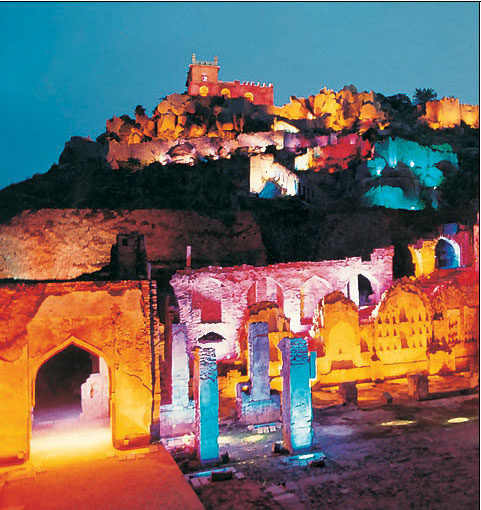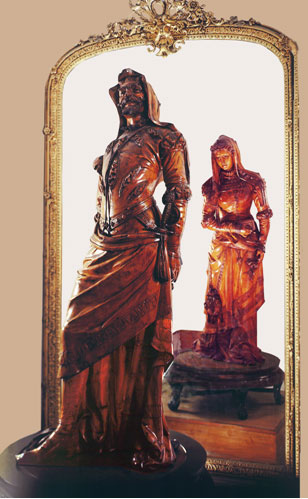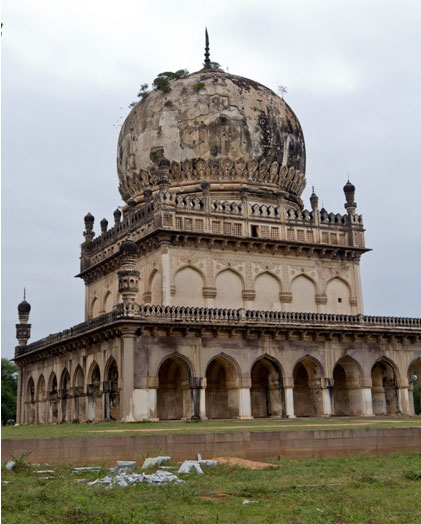
Introduction:
is the capital and largest city of the southern Indian state of Andhra Pradesh. Occupying 650 square kilometres (250 sq mi), along the banks of the Musi River, it has a population of 6.8 million and metropolitan population of 7.75 million, making it the fourth most populous city and sixth most populous urban agglomeration in India. At an average altitude of 542 metres (1,778 ft), much of Hyderabad is situated on hilly terrain around artificial lakes, including Hussain Sagar—predating the city's founding—north of the city centre.
Established in 1591 by Muhammad Quli Qutb Shah, Hyderabad remained under the rule of the Qutb Shahi dynasty for nearly a century before the Mughals captured the region. In 1724, Mughal viceroy Asif Jah I declared his sovereignty and created his own dynasty, also known as the Nizams of Hyderabad. The Hyderabad State ultimately became a princely state during British rule, and remained so for150 years, with the city serving as its capital. The city continued as capital of a new Hyderabad State after joining the Indian Union in 1948 and before attaining its current status as the focal point of Andhra Pradesh in 1956. Hyderabad is expected to be part of Telangana when the new state is carved out of Andhra Pradesh.
SHILPARAMAM
 Shilparamam, a crafts village, conceived in the year 1992, is situated just about few kilometers from Hyderabad city. Sprawling over 65 acres of land in the hi-tech hub city of India, Shilparamam gives a scenic ambience of tradition and cultural heritage. For promotion and preservation of Indian arts and crafts and to motivate the artisans, the state government established this platform. Enchanting the blend of arts and artifact, epitomizing the true legacy with the diverse natural beauty of rural India; Shilparamam is tribute to Andhra Pradesh. Exhibiting the rustic richness and creativity of Hyderabad, it has captivated the imagination of visitors.
Shilparamam, a crafts village, conceived in the year 1992, is situated just about few kilometers from Hyderabad city. Sprawling over 65 acres of land in the hi-tech hub city of India, Shilparamam gives a scenic ambience of tradition and cultural heritage. For promotion and preservation of Indian arts and crafts and to motivate the artisans, the state government established this platform. Enchanting the blend of arts and artifact, epitomizing the true legacy with the diverse natural beauty of rural India; Shilparamam is tribute to Andhra Pradesh. Exhibiting the rustic richness and creativity of Hyderabad, it has captivated the imagination of visitors.
Duration: 180 mins
Holiday: No
GOLKONDA FORT
 The Golkonda fort was first built by Kakatiyas as part of their western defenses. The fort Plan was designed after the Kondapalli Fort near Vijayawada, Krishna Dt. It was built in 945 CE-970 CE. The fort was strengthened by Musunuri Nayaks who overthrew the Tughlak army occupying Warangal. In the 16th century, Golkonda was the capital city of the Qutb Shahikingdom, near Hyderabad. The city was home to one of the most powerful Muslim sultanates of the region and was the flourishing center of diamond trade.
The Golkonda fort was first built by Kakatiyas as part of their western defenses. The fort Plan was designed after the Kondapalli Fort near Vijayawada, Krishna Dt. It was built in 945 CE-970 CE. The fort was strengthened by Musunuri Nayaks who overthrew the Tughlak army occupying Warangal. In the 16th century, Golkonda was the capital city of the Qutb Shahikingdom, near Hyderabad. The city was home to one of the most powerful Muslim sultanates of the region and was the flourishing center of diamond trade.
Duration: 120 mins
Holiday: Monday
SALARJUNG MUSEUM
 The Salarjung Museum is the third largest museum in India housing the biggest one-man collections of antiques in the world. It is well known throughout India for its prized collections belonging to different civilizations dating back to the 1st century. Nawab Mir Yusuf Ali Khan Salar Jung III (1889–1949), former Prime Minister of the seventh Nizam ofHyderabad, spent a substantial amount of his income over thirty five years to make this priceless collection, his life's passion.
The Salarjung Museum is the third largest museum in India housing the biggest one-man collections of antiques in the world. It is well known throughout India for its prized collections belonging to different civilizations dating back to the 1st century. Nawab Mir Yusuf Ali Khan Salar Jung III (1889–1949), former Prime Minister of the seventh Nizam ofHyderabad, spent a substantial amount of his income over thirty five years to make this priceless collection, his life's passion.
Duration: 180 mins
Holiday: Fridays and public holidays
Laad Bazaar (near Charminar)
 Laad Bazaar is the main market for bangles, it is popular for bangles, semi-precious stones, pearls, jewellery, products such as silverware, Nirmal, Kalamkari paintings, bidriware, lacquer bangles studded with stones, saris and hand woven materials of silk, cotton. Brocade, velvet and gold embroidered fabrics, traditional Khara Dupattas, lacquer bangles and perfumes
Laad Bazaar is the main market for bangles, it is popular for bangles, semi-precious stones, pearls, jewellery, products such as silverware, Nirmal, Kalamkari paintings, bidriware, lacquer bangles studded with stones, saris and hand woven materials of silk, cotton. Brocade, velvet and gold embroidered fabrics, traditional Khara Dupattas, lacquer bangles and perfumes
The narrow lane is filled with burkha-clad women, bangle shops and old buildings with wooden balconies, bargaining and haggling is part and parcel of this market. Shopkeepers employ "beckoning" tactics, placing an employee at the entrance of the store beckoning passers-by to enter their shop.
Qutub Shahi Tombs
 This tombs represent the most authentic and majestic display of the Qutub Shahi dynasty architectural traditions today. The grandeur of the tombs is ensconced amidst the beautiful and picturesque landscape and gardens of Ibrahim Bagh, and the tombs themselves are dedicated to the seven Qutub Shahi kings who ruled Golconda for nearly 170 years. The style of the tombs are varied, displaying Hindu, Persian, and Pathan forms–Indo-Persian architectures that are influenced by Deccani structural ideas. As a result, a distinct Qutub Shari school of architecture marked by liberal use of minarets, arches, domes, and columns was born.
This tombs represent the most authentic and majestic display of the Qutub Shahi dynasty architectural traditions today. The grandeur of the tombs is ensconced amidst the beautiful and picturesque landscape and gardens of Ibrahim Bagh, and the tombs themselves are dedicated to the seven Qutub Shahi kings who ruled Golconda for nearly 170 years. The style of the tombs are varied, displaying Hindu, Persian, and Pathan forms–Indo-Persian architectures that are influenced by Deccani structural ideas. As a result, a distinct Qutub Shari school of architecture marked by liberal use of minarets, arches, domes, and columns was born.
Duration: 45 mins
Holiday: Friday

